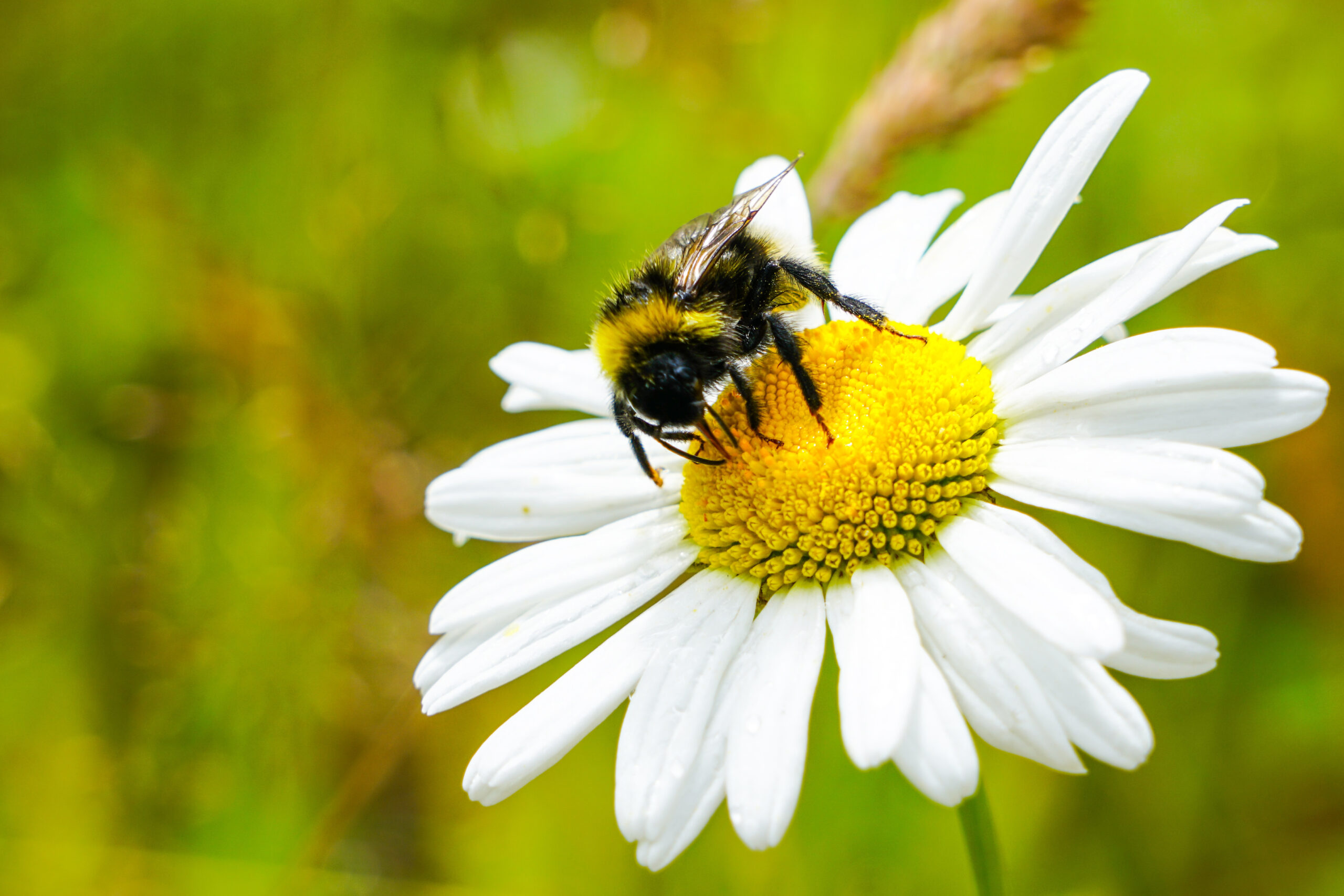Bees matter. They’re essential for our biodiversity and for ensuring healthy environments and economies. But these little beasties are under threat, with numbers declining across the world. And that’s bad news for all of us.

A landmark 2019 report from the Intergovernmental Science-Policy Platform on Biodiversity and Ecosystem Services (IPBES) stated: “Sacred passages about bees in all the world’s major religions highlight their significance to human societies over millennia.”
Most of us probably don’t pay much attention to bees, except if they fly too close to our wine glass or are buzzing against an inside window. But we need them – and for far more than just honey.
The IPBES says that the western honey bee is “the most widespread managed pollinator globally” and that “more than 90 per cent of the leading crop types are visited by bees.” In other words, bees support a whole ecosystem.
Sadly though, pollution, long-term use of pesticides, and loss of habitat have had a sustainedly detrimental effect on bees. And if this trend is allowed to continue, the global impact could be huge.
Bees are the world’s most important pollinators. According to experts at the United Nations Food and Agriculture Organization (FAO), one-third of the world’s food production depends on bees. If bee populations decrease further, our diets will likely be poorer quality and less nutritious.
The IPBES confirms: “Loss of pollinators could lead to lower availability of crops and wild plants that provide essential micro-nutrients for human diets, impacting health and nutritional security and risking increased numbers of people suffering from vitamin A, iron, and folate deficiency.” Furthermore, plants grown to support livestock for meat production, such as clover and alfalfa, depend to some extent on pollination by bees.
Are you wearing cotton today? Cotton plants rely on pollinators too.
Overall, the economic value of bees runs in the hundreds of billions of dollars. In 2017, for the UK alone, the estimated annual cost to employ people to do the work of pollinators was £1.8bn. And yet, these industrious wee creatures do it for free!
Bees are not the only pollinators, of course, but they are arguably the most effective. Unlike others (such as moths, beetles, flies, some birds, and bats), they don’t just visit enough flowers to feed themselves. They’re also gathering pollen to support their nests, which means they’re visiting many more flowers and carrying more pollen between them.
The United Nations Food and Agriculture Organization states that encouraging pollinators – particularly bees – is one of the best sustainable ways to boost food security and support sustainable farming.
Some unexpected good news!
The worldwide impact of the Covid-19 pandemic has been extraordinary. However, global lockdowns have been beneficial for the environment – and bees! As humans languished at home, air pollution levels dropped as there were fewer vehicles on the road and fewer industries operating. Mark Brown, professor of evolutionary ecology at Royal Holloway, University of London, observed: “In a world with less pollution, bees can make shorter and more profitable ‘shopping trips’, and this may help them rear more young.”
With council maintenance timetables disrupted, verges were left uncut for longer, so more wildflowers bloomed. And more wildflowers meant more food for bees. Ecologists had been calling for this approach for years, through initiatives like “Don’t mow; let it grow”, and have advocated for a more relaxed mowing schedule ongoing.
Bees don’t just provide us with honey. There’s also royal jelly, propolis, and bee pollen, valued by the wellness community, and beeswax, which can be used as a polish for wood or crafted into candles.
In short, we need bees. They deserve our care and support. So, what can we do to help?

Create a mini-meadow
A study by the University of Sussex suggests that even a space of just four square metres is enough to provide a rich habitat for pollinators and support biodiversity. Assisted by citizen scientists, researchers created wildflower mini-meadows in gardens and allotments using commercially available seed mixes. “In the year following seed-sowing, mini-meadows were supporting on average 111 per cent more bumblebees compared to control plots where no wildflowers had been sown. These resource-rich habitats also attracted 87 per cent more solitary bees and 85 per cent more solitary wasps.”
Provide a water station
Like us, bees get thirsty, and it can be harder to hydrate in the warmer, dry summer months. A bird bath is ideal, as the bees can perch on the rim as they drink. You could also add pebbles for them to stand on. Indeed, a sturdy water bowl filled with pebbles could also work well.
Consider hiring a hive for your backyard
Several companies in New Zealand offer managed beehive hire services. Prices and service levels vary, so check carefully and choose the option that suits you, your pocket, your space, and your appetite for honey.
New Zealand has 28 native species of bees. It also has 13 introduced species, most of which were introduced by European settlers. “Our native bees’ tongues weren’t long enough to pollinate the new crops being introduced,” says Val.
As of October 2022, there were more than 726,000 beehives registered in New Zealand and nearly 9,800 registered beekeepers.






